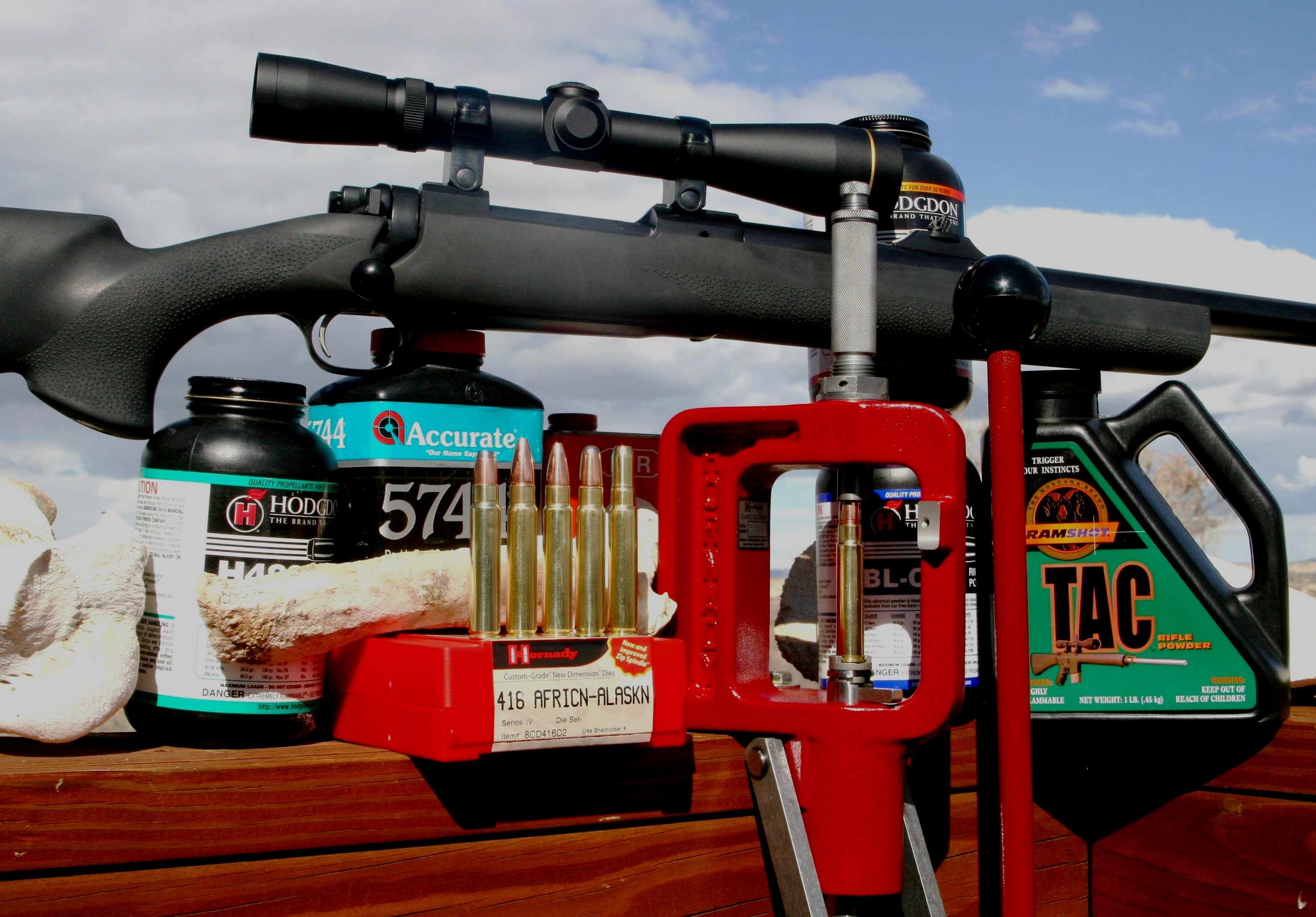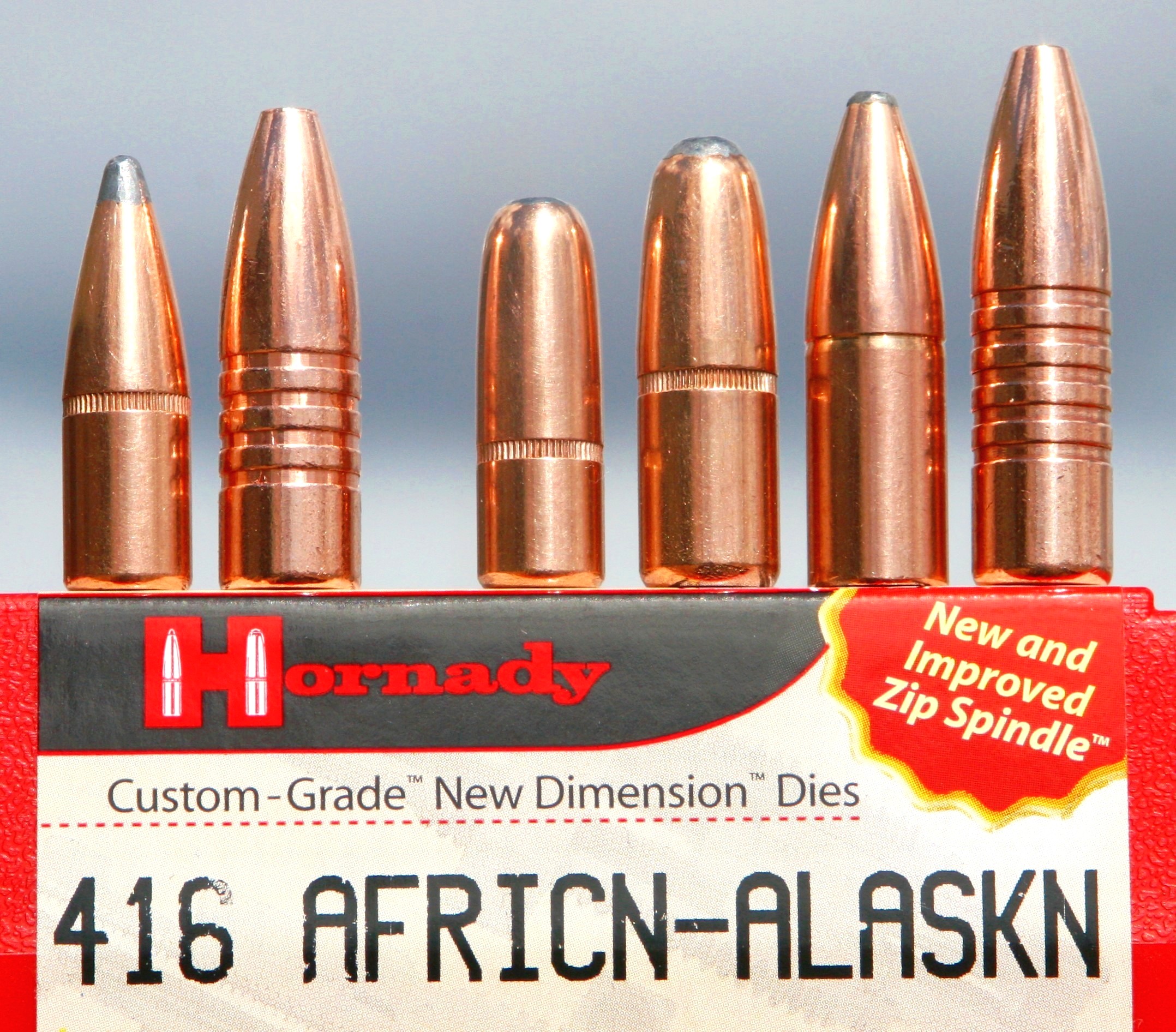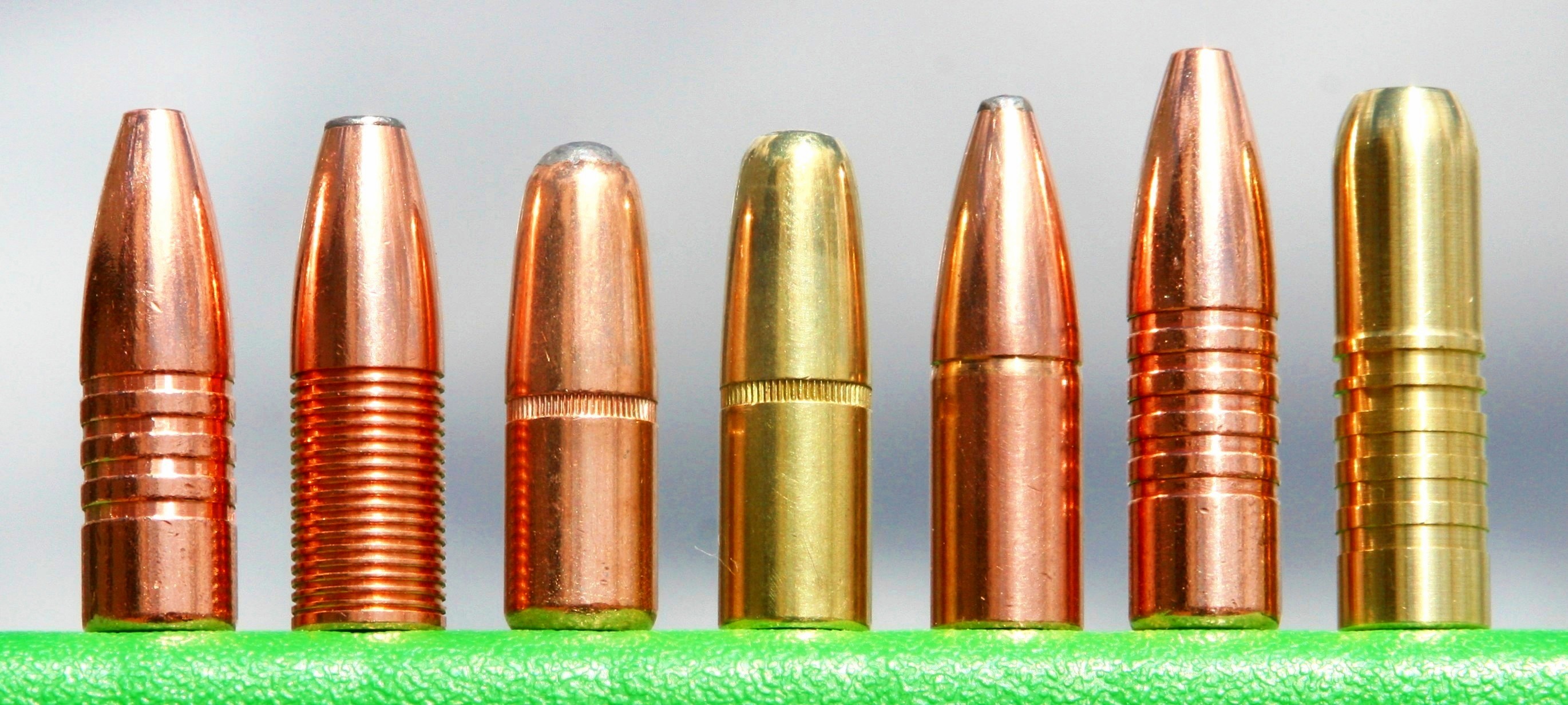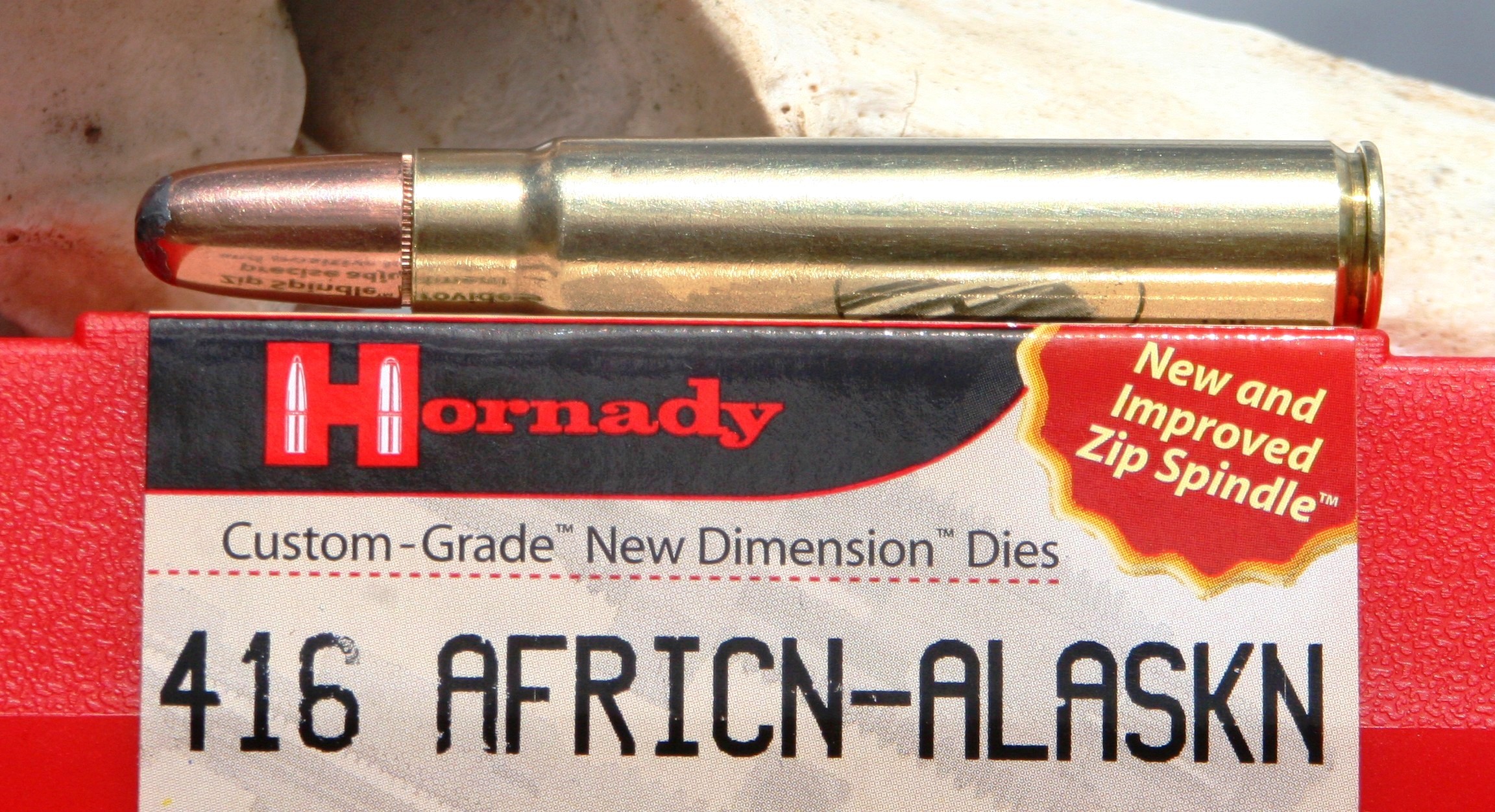
From the moment I first held the .375 Ruger rifle and cartridge, I could not stop thinking about the same case opened up to .416. Prior experience with big bore rifles told him that bigger, not faster, was the way to tackle really large and dangerous game. If you can shoot a 30-06, you can even handle many of the special North American hunting loads developed by the author.
Two years ago, when Ruger introduced the new .375 Ruger in their new Hawkeye African and Alaskan models, many die hard hunters questioned the reasoning behind a “me too” medium bore cartridge. In comparison, the time-honored classic .375H&H. Ruger’s rationale was very simple. The H&H was offered in their Magnum rifle but at a considerable price increase over the workhorse M-77. As the H&H case has a very long, tapered case, Ruger worked with Hornady to come up with a more modern 375 based on the 30-06 length action of the high volume M-77 rifle. I got to shoot the new Rugers right away and very much liked the performance, but a little voice told me that the way to go was BIGGER.
Chapter 1: The Rifle
Click to LOAD DATA SHEET
I specified the barrel to be cut to 25” and contoured to exactly fill the barrel channel of the great Hogue stock.
A .375 is not meant for shooting really large, heavy game at long distances.Is is more for the up close and personal rock-throwing ranges. If I am going to shoot a .375 with more case capacity than the H&H, I would rather be throwing a much larger bullet for the same or similar recoil levels. I decided to send a 20” Alaskan off to Z-Hat in Wyoming (www.z-hat.com) for the conversion, as they had previously done very well with a .358 Hawk. Reamers came from Manson Reamers (www.mansonreamers.com), who were instructed to duplicate all dimensions from the parent .375 but accommodate for a larger diameter neck for the .416. A stainless Lilja barrel in their heavy #7 contour with a 1-14” twist was used. Beautiful front and rear adjustable sights were provided by NECG (www.newenglandcustomgun.com), as well as a barrel band sling swivel. I specified the barrel to be cut to 25” and contoured to exactly fill the barrel channel of the great Hogue stock. At a diameter...
of 0.825”, the finished rifle comes in at 9.5 lbs (about 1-3/4 lb heavier than the .375 Ruger) and is perfectly balanced. As I am not very vain, I choose to not name it the .416 Ken. Simple is always better, so I settled on calling it the .416 African-Alaskan. But in actuality, it is the .416 Ruger. So now I had a really great feeling/handling rifle, and even Hornady custom dies, but I had absolutely ZERO in the way of loading data.
Chapter 2: Feeding the BIG BOY

Forming cases was very easy using new .375 Ruger brass. A push-in tapered expanding plug resulted in more uniform necks than a traditional expander ball. I would swab the inside of the neck with a cotton swab which had been swirled in Redding Imperial Sizing Die Wax. After cleaning the neck inside with another swab wetted with carb/choke cleaner, this resulted in virtually fully formed cases ready to load.
QuickLOAD came to my rescue when developing loads for the .416. I wanted my data to be far more than just top loads with 400-grain projectiles, as most hunters do not regularly have to shoot elephants or Cape buffalo. Most would perhaps like to use their safari rifle on the more mundane but more often hunted deer, elk, bear, moose, or boar. As such, I tested 350 and 300-grain spitzers, and even lighter still 270 and 235-grain soft points were tested as well.
The water capacity of the parent 375 case is 99-grains, while the .416 version holds 101.6; a .416 Taylor handles 92, the .416 Remington Magnum, 107-grains. Based on those numbers, the velocity of 2,400 fps seemed very attainable with a 400-grain bullet. Top loads in the lighter rifle weight .375 with 300-grain bullets at 2,625 fps for 4,600 ft-lbs, delivers 47 ft-lbs of recoil. My top loads with a 400-grain reaches over 2,400 fps for almost 5,200 ft-lbs and produces only slightly more recoil, at 48~52 ft-lbs in my slightly heavier rifle.
Big game calls for big bullets, so I began with 400-grain projectiles.
If facing an angry brown bear, lion, Cape buffalo or elephant, I would gladly deal with slightly more recoil in...
exchange for a 33% increase in bullet weight. In times of great stress, you will never notice a big gun’s recoil much less an increase of only 5~10%. The game on the receiving end will, however, react far more significantly to the blow of a 400-grain .416 caliber projectile vs. a 300-grain .375. That is the reason, in its most simple form, for choosing the .416 version of the Ruger cartridge- if you're after dangerous game.
Chapter 3: Reloading and Special Loads
Big game calls for big bullets, so I began with 400-grain projectiles. The Hornady round nosed soft point achieved the targeted velocity of 2,400 fps with either Winchester 760 or Ramshot TAC shooting into an inch or less at 100 yards. Solids of the same weight from Hornady, Barnes, or the new solids from Nosler, attained similar speeds. Accuracy in all cases was very good for loads producing over 5,100 ft-lbs. Also tested were the Barnes TSXs and Nosler Partitions. Accurate shooting medium loads (one shot into 0.69”) were also developed using H4198 and Accurate 5744 powder. Some of these loads recoil significantly less than full-power rounds but still duplicate the classic .404 Jeffery at 2,150 fps.

An especially useful medium weight bullet, the Barnes 350-grain TSX, proved to be very accurate with a number of different powders- Accurate 2520 and 5744, as well as IMR 4895 and 4320- and at several useful power levels. Well known for offering deep penetration and flatter shooting than traditional 400-grain bullets, shots on medium to large game are within reason out to 250 yards or more. Both the fastest load, at 2,606 fps, and the slowest, at 2,204 fps, shot around ¾” (sometime less).
Myth: Big bores are slow and inaccurate. This is not at all true. Witness the 300-grain Barnes TSX at 2,861 fps, producing over 5,400 ft-lbs, and shooting into only 0.84”! This load would hit much harder than just about anything a .375 could ever dish out. Two almost as accurate loads utilized modest charges of Accurate 5744, for 3,200~3,800 ft-lbs at similar group sizes. These low-recoil loads, just above 30-06 levels, could harvest 98% of all game in the world, big or small.
...
While many of the preceding loads can take heavy, dangerous game in deepest, darkest Africa, most hunters can only dream of such an adventure. The .416 would also very well serve someone wanting to hunt in his backyard with his “someday Africa” rifle. Hawk Bullets (www.hawkbullets.com) produces copper jacketed, pure lead cored bullets, which are just the ticket for North American hunting and big bore practice. I tested their 300-grain soft point spitzers and also 270 and 235-grain flat points. Moderate charges of H4198 or 5744 in the 52~60-grain range produced loads with recoil levels at, or just above, the classic 30-06. Any of them would be great for deer, elk, bear, moose, or boar.
Chapter 4: Recoil Comparisons

The heaviest load in this .416 only has 5 to 10% more recoil than the parent .375 Ruger, in part due to the appropriate weight of the rifle. That difference will never be noticed in the field during the excitement of a hunt. I will take 400-grains over 300 any day if facing large, dangerous game at up close and personal distances. The currently popular .458 Lott does deliver perhaps 10~15% more energy, but it does so at a cost of increasing recoil substantially over the .416.
Big bores are fun, especially when they do not hit you, harder than they hit the quarry.
Some of my range sessions with the .416 saw me firing over 200 rounds in a single session from sand bag rests. Only twenty rounds with a Lott leave me wanting to look for something else to do. The bottom line is this- professional hunters would rather a client show up with a gun they can handle and delivers adequate power for the task, than a more powerful rifle they cannot accurately shoot. If you can shoot the .375 H&H or Ruger, then you can step up to this .416.
Summary
All of the preceding text provides excellent support for a .416 based on the .30-06 action-length .375 Ruger. Game will be hit significantly harder by the heavy blow of this cartridge. Should Ruger...
and Hornady decide to think out of the box by offering some non-traditional loads (besides 400-grains), then many more hunters may be interested in owning and shooting a .416 caliber rifle. Unsurpassed raw power at moderate to medium range using pointy 350 or 300-grain bullets at high velocity, or using lighter still conventionally constructed slugs at speeds similar to the 400s are “everyday useful” to far more hunters than bone-breaking, full power rounds. Big bores are fun, especially when they do not hit you harder than they hit the quarry.
